Cowboys are more popular than ever thanks to social media and recent western-themed television shows. Some people want to date a cowboy, some people want to hang out with a cowboy, and others want to become a cowboy.
Cowboys represent a simpler way of life, but the truth is that most cowboys do more manual labor than the average person.
The work is often rewarding but being a cowboy is not for the faint of heart by any means.
It is easy to dress like a cowboy with the click of a few buttons, but becoming a real cowboy is another story altogether. The good news is you can be a cowboy; the bad news is that it is going to take a lot of time, effort, and dedication.
Table of Contents
How to Become a Cowboy
Get the Right Attire
The first step to being a cowboy is to get the right attire for the job. Cowboys need clothes and accessories that can withstand the rigors of the lifestyle.
Shirts and Jeans
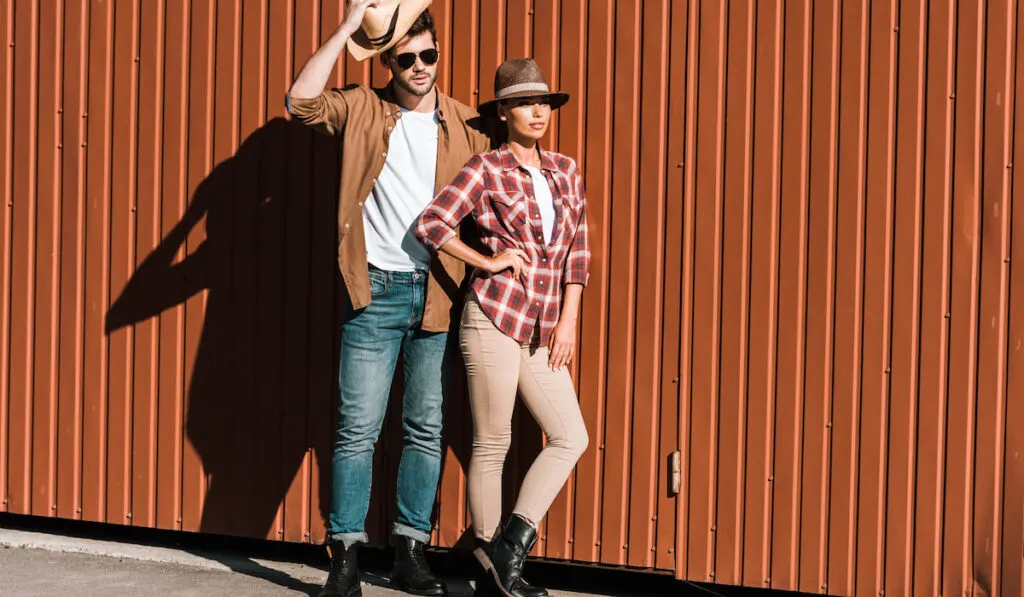
Cowboys need t-shirts to keep them cool when working outdoors, but they will also need long sleeve shirts. These will help keep their arms safe when working with barbed wire or picking up hay, which can stab the skin, causing open wounds or rashes.
Of course, every cowboy also needs a couple of nice button-down western shirts to wear to events on and outside of the farm or ranch they work on.
Cowboys also need to have plenty of functional jeans, not the stylish, distressed ones.
Real cowboys often opt for rugged denim jeans that come in a relaxed or regular fit that they are not afraid of getting dirty.
Boots
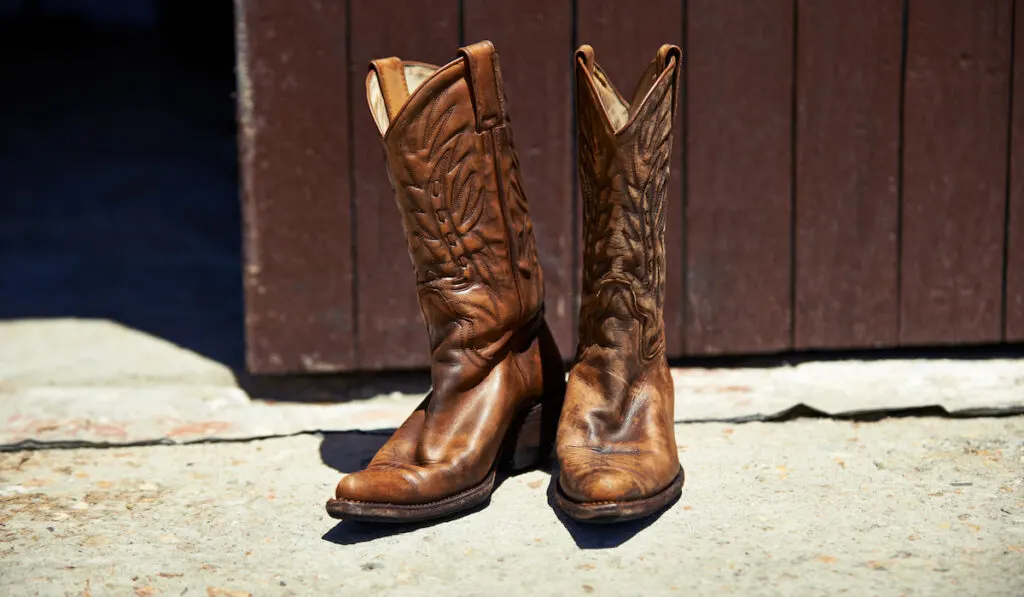
Boots are the cornerstone to being a cowboy, and it is not just because they look cool.
Cowboy boots are a necessity on any farm or ranch because they provide protection and traction for the cowboy.
Boots protect cowboys by keeping their feet safe from snow, water, snakes, thorns, and other obstructions that pose a threat. The boot heels keep a cowboy’s feet from slipping through saddle stirrups, a mistake that could be life threatening in the wrong situation.
The right cowboy boots should have tread on the sole to provide traction and prevent slipping while walking or running. Avoid steel-toed boots because those can injure toes under heavy weights like that of a 1,500-pound horse or bull.
Chaps
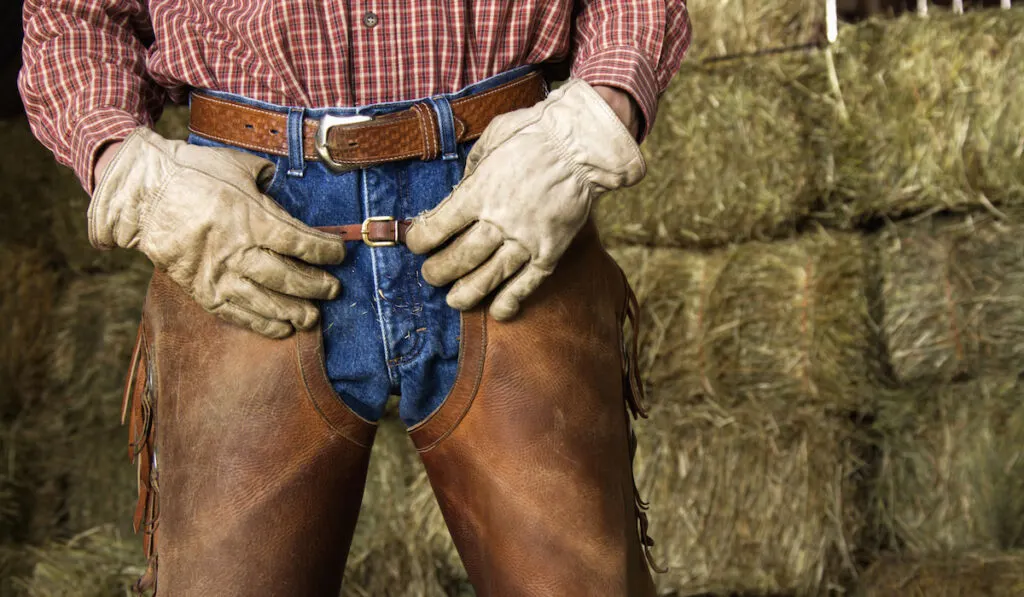
Any cowboy that intends on riding a horse on a large ranch will need chaps to keep their legs safe and warm. Leather or suede chaps help protect cowboys when they are riding horses, walking through brush, and wrangling livestock.
Gloves
Leather gloves are a necessity on any farm because they protect the cowboy’s hands. Many cowboys swear by gloves made from deerskin because they are flexible, comfortable, and durable when working on fences.
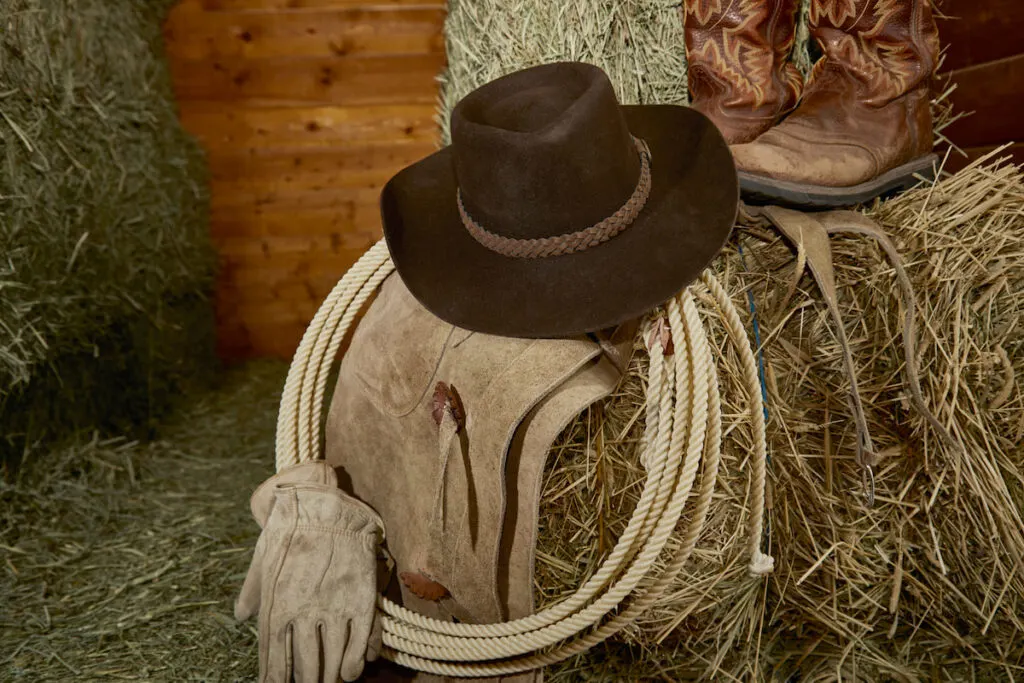
Cowboy Hat
Cowboy hats are not just a fashion statement, they protect the cowboy’s head from sun, rain, wind, and the cold. Many cowboys prefer to have a straw hat that keeps them cool during the summer along with a winter felt or leather hat that keeps them warm during colder months.
Durable Coat
Cowboys need a reliable coat that will not rip easily when working around nails, barbed wire, fence wire, and thorns. Look for an outdoor jacket made of cotton canvas. These jackets often come with a sherpa or fleece lining that will keep you warm during cold months.
Vest
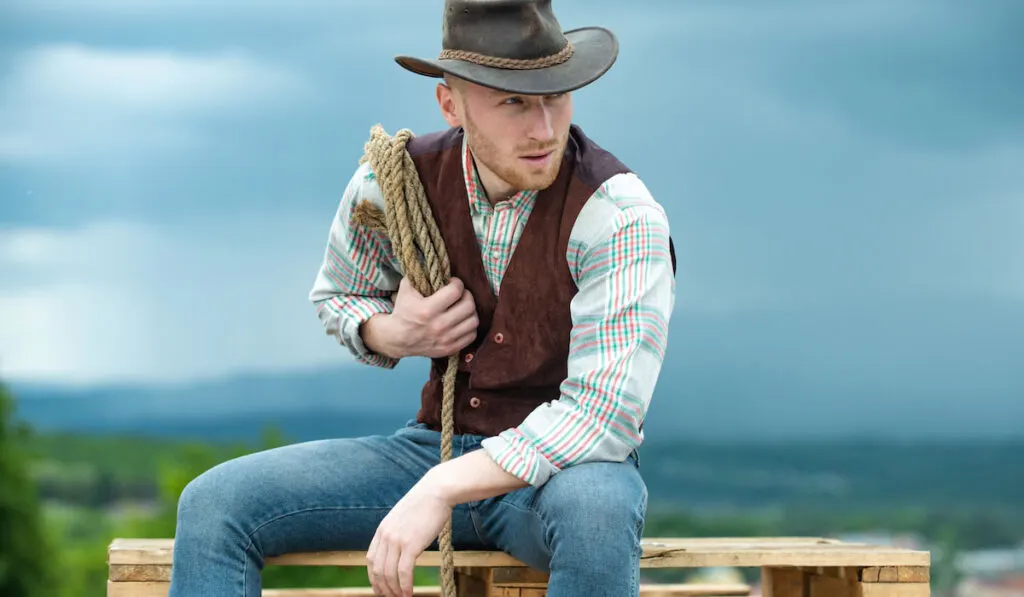
Canvas vests are great for helping keep cowboys warm when they are outside working in the fall or early winter before it gets too cold. These are great options when a coat is just too much but it’s too chilly for just a long-sleeved shirt.
Bandanas
Every cowboy needs a small stockpile of bandanas they can change out every day or so. Bandanas are useful to wipe away sweat, shield faces from the wind and dust, and even help them stay cool on hot days.
Pocketknife
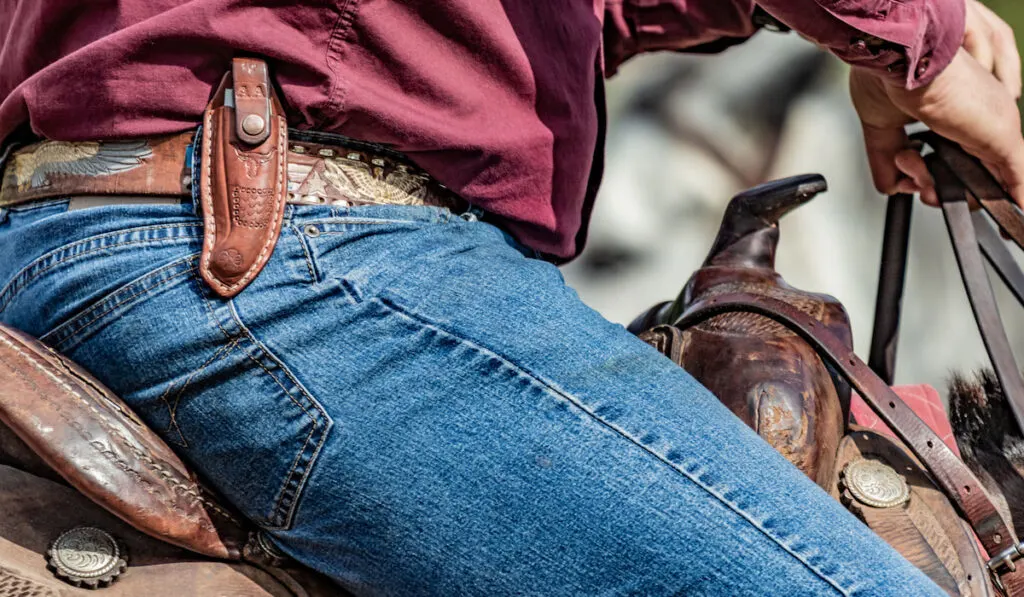
A good pocketknife is an essential part of a cowboy’s basic attire. Every cowboy I have ever met had a pocketknife on them as it is handy for cutting twine or netting off hay bales.
Learn the Common Skills Cowboys Need to Know
Once you have the right attire, the next step to being a cowboy is learning some basic cowboy skills. The following is a list of common skills that cowboys need to know.
Carry Heavy Objects
Cowboys need to be able to carry heavy objects like hay bales, saddles, wooden boards, young livestock, t-posts, and fencing supplies. They also need to be strong enough to push and dump large wheelbarrows full of horse manure.
Fence Building and Repair
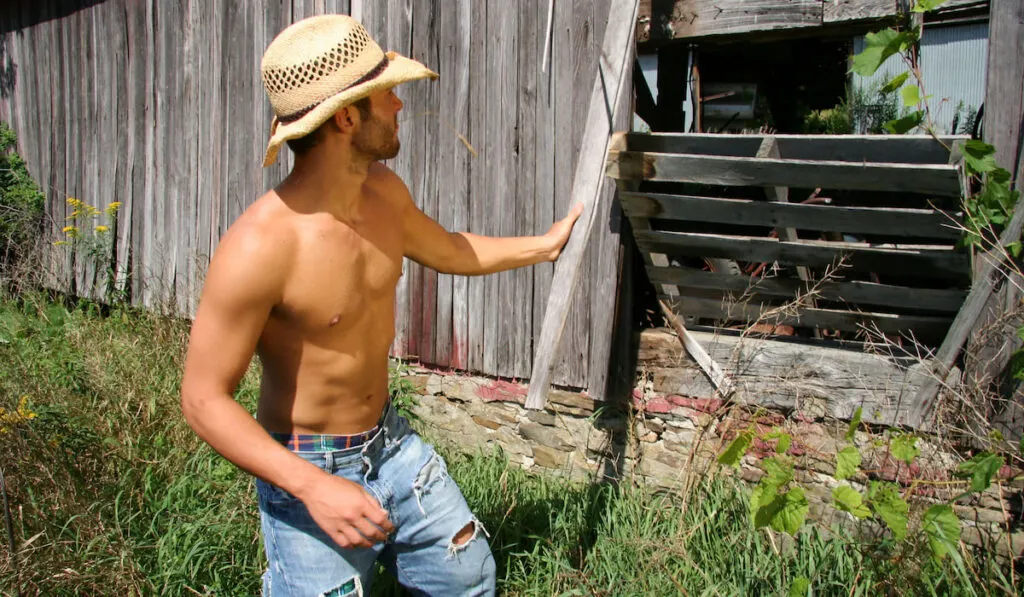
It is important for cowboys to know the basics about how to build and repair fencing. Working on farms requires a lot of fence work, but most new cowboys can learn this skill on the job.
Operate a Tractor
Operating a tractor is something every cowboy needs to be able to do. Moving piles of manure, unloading sawdust, and carrying round hay bales often requires a tractor.
Horse Care
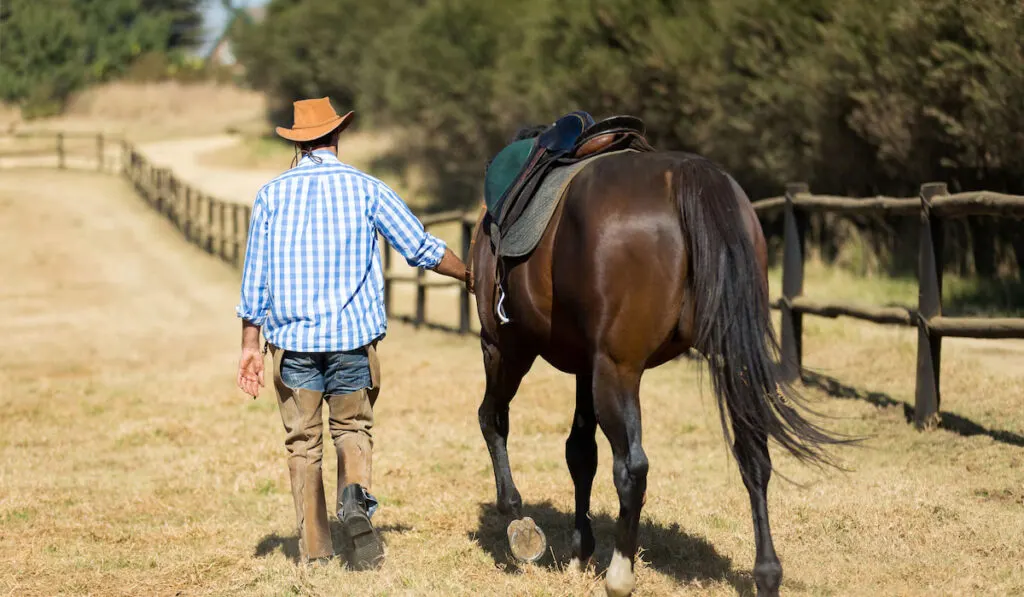
Cowboys ride horses, so horse care is an essential part of the lifestyle. This means that eventually, you will have to know how to feed, water, and care for horses.
Horses often spend part of their day or week in a stall, so regular cleaning of their stalls is a key part of the job. Horses also need their hooves cleaned and shoes changed as often as necessary. As a result, a cowboy must find a suitable farrier or learn the craft themself.
Horse Saddling
Once you have basic horse care down, you will need to learn how to properly saddle horses. You will need to learn exactly what a tie down, bridle, saddle pad, breast plate, and girth plates are.
An essential part of saddling a horse is correctly cinching the girth plate on the horse to make sure the saddle does not fall off while you are riding.
Horseback Riding
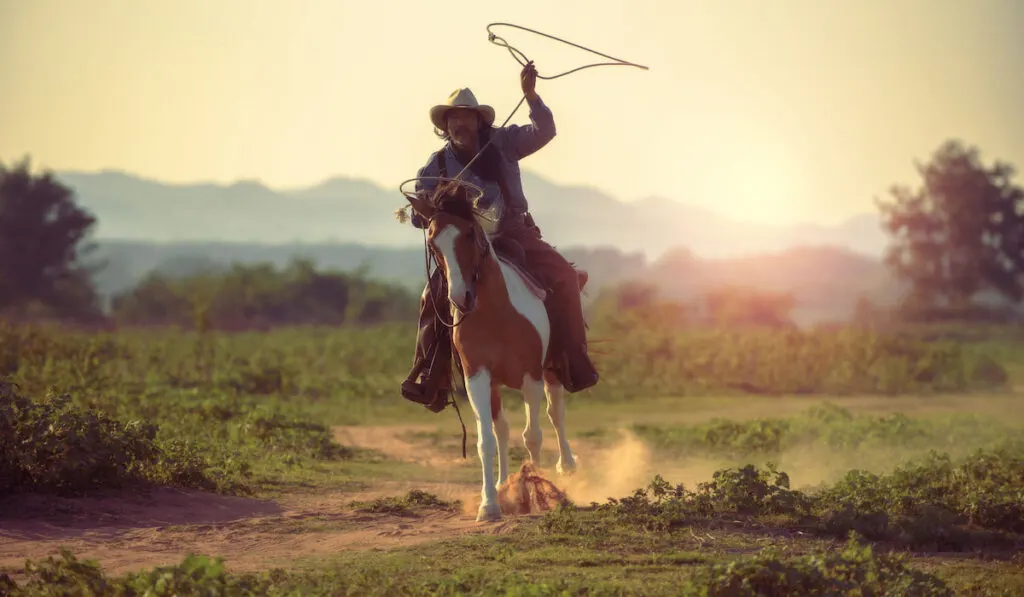
When you know the proper way to care for and saddle your horse, then you can start to learn how to ride, if you do not know already. Start slow, find a good trainer, and learn the right way to ride a horse.
Horseback riding is the cornerstone of being a cowboy, so this is not a step you can skip, and it is not something you can learn overnight.
Once you learn how to ride, and how to ride well, you can really hone your cowboy skills.
The best place to learn how to ride is a horse ranch that offers horseback riding lessons. Often, they will teach you all about horse care, saddling, as well as how to ride a horse.
Roping
Roping is an important part of being a cowboy and extremely helpful when you need to catch a cow. If you plan to work on a cattle ranch, roping is a skill you need to learn.
Roping is potentially dangerous if you do not know what you are doing, so be sure to learn how to rope from an experienced roper.
Sorting and Moving Cattle
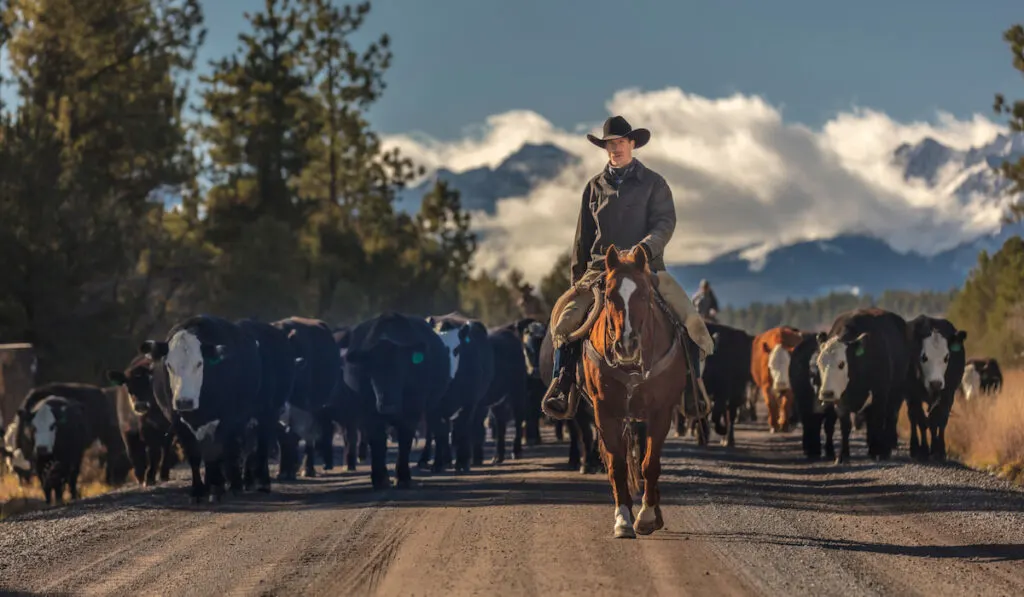
Cowboys that live on cattle ranches must sort and move cattle often, both on foot and on horseback. It is vital to learn how to do this if you want to be successful on a cattle ranch.
The keys to moving cattle is watching their heads and staying patient; the direction they are pointing their head is where they are going.
Driving a Truck and Trailer
Working as a cowboy often means that you will have to drive a truck hooked to a trailer at some point. While it sounds relatively easy to do, the truth is that it is not, and it requires a lot of experience to get good at.
Everything that you may know about driving a truck changes when you add the weight and length of a trailer. If you have never driven a truck that is pulling a stock or horse trailer, you may want to gain some experience now.
Basic Livestock Health
Cowboys must work with livestock, so you should know basic livestock health. You should also know what type of food they can eat, how much food they need, and what things they cannot eat.
Depending on the type of livestock you will be working with, you need to know what ailments to keep an eye out for and how to properly care for the animals. For example, when working with cows you need to watch out for things like bloat, pneumonia, pink eye, and drooping heads, among other things.
Gain Experience Being a Cowboy
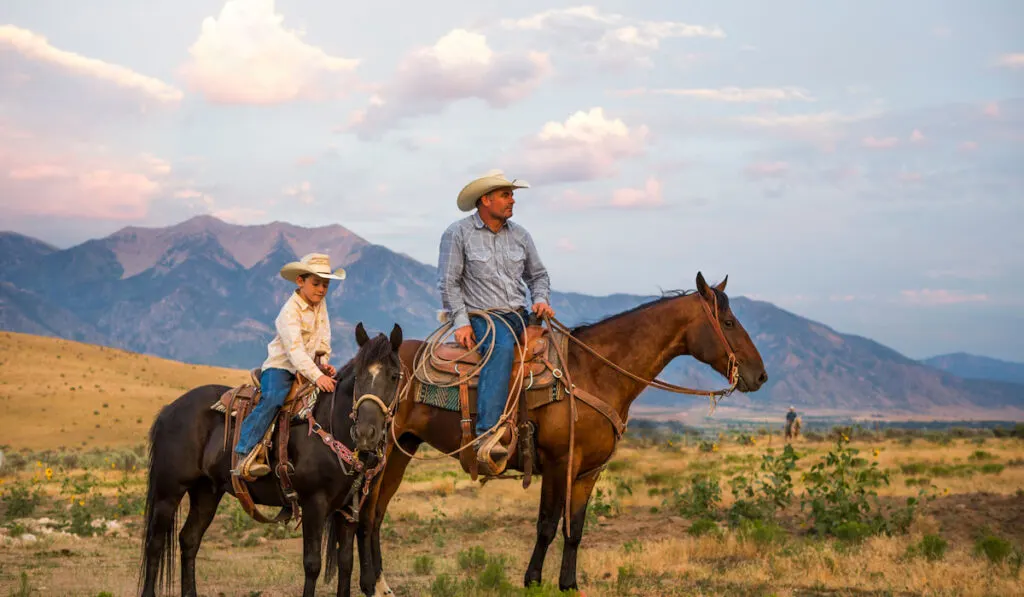
After you get the right attire and understand the skills you will need to hone, the last step is to gain life experience being a cowboy. For those that did not grow up on a farm or ranch, it will take a lot of work and several years to be a real cowboy.
If you know someone that owns a horse farm or cattle ranch, reach out to them to see if you can start helping them out. Farm and ranch operations almost always need help, so you should be able to find a place offering such as an entry-level job that will allow you to learn on the job.
Take advantage of every learning opportunity that you can, even if the job is short-term or seasonal. If you keep an open mind and a positive attitude, you will succeed at becoming a professional cowboy.
What Kind of Jobs Do Cowboys Get?
Cowboys can get a variety of different jobs depending on their skills. The best cowboys can do almost anything on the farm, but of course many will be better at some tasks than others.
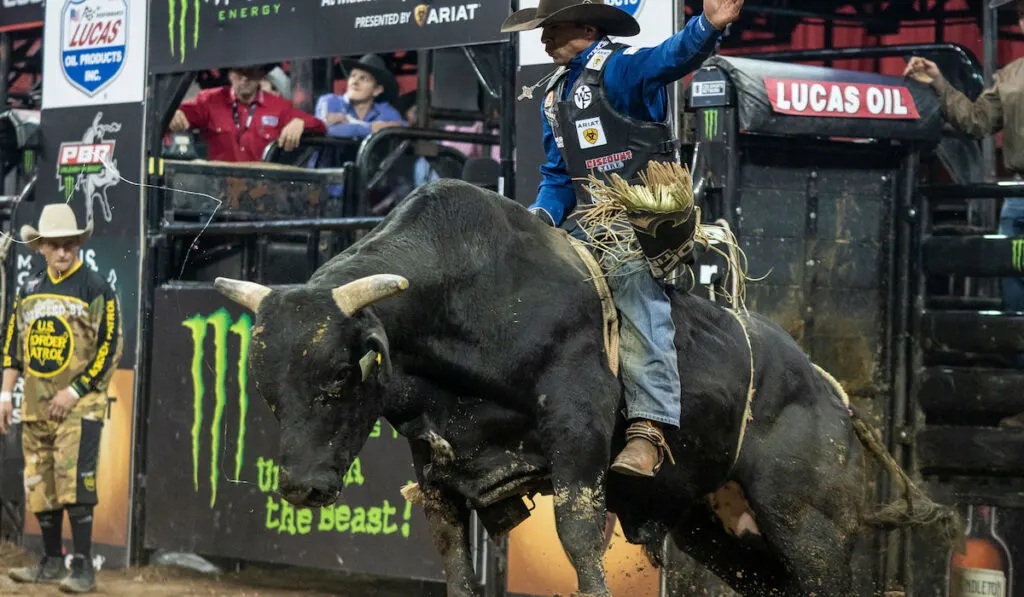
17 Jobs for Cowboys
- Farm or Ranch Hand
- Farm or Ranch Sitting
- Rodeo/Horse Event Worker
- Cattle/Horse Sale Wrangler
- Loose Cattle Catcher
- Trail Guide
- Range Cowboy
- Ranch Cook
- Horse Trainer
- Farrier
- Ranch Manager
- Hauling Livestock or Horses
- Competition Judges
- Bull Riding
- Hay Baler
- Livestock Feed Store Associate
- Professional Horse Competitor
Do Cowboys Get Paid?
Cowboys can get paid if they accept a paid cowboy position, most of the time, their payment comes in the form of money, food, and board. Essentially, part of their pay is having a free place to stay and food to eat while they are working on the ranch or on a farm.
If the facility does not offer food and board, or the cowboy lives nearby and does not need it, then of course, the cowboys will get paid like they would at a regular job. The rate of pay depends on the job, location, and how many hours a day they must work.
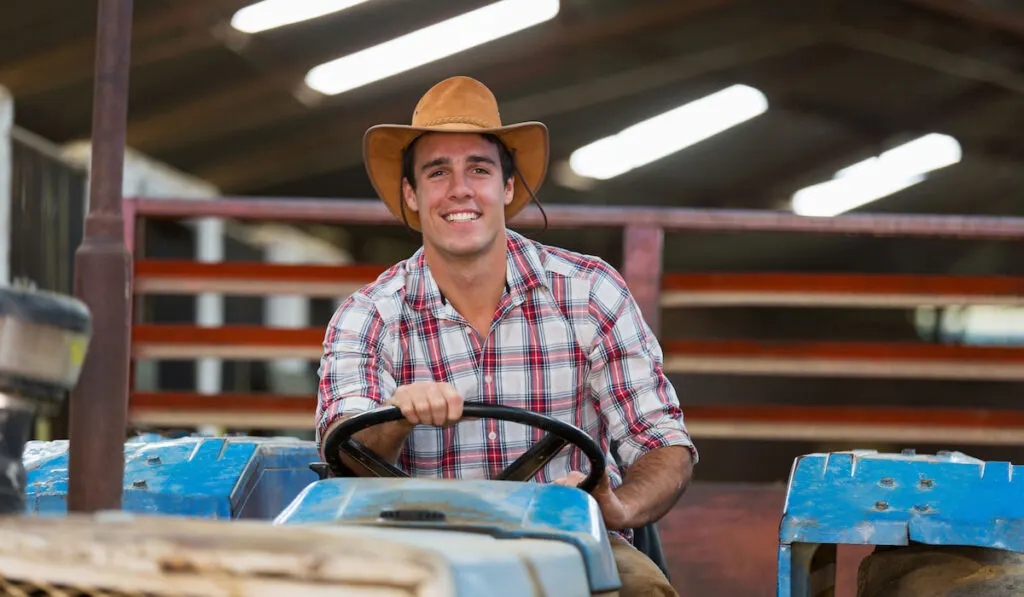
Is Being a Cowboy a Real Job?
Being a cowboy is a way of life and many cowboys can make careers out of their abilities. Cowboy work is a real job, and it is a very mentally and physically demanding job.
While they will likely never consider themselves financially rich, professional cowboys do find their lives and the work rewarding. Some cowboys can work at their profession for most of their lives.
Do You Have to Work a Cowboy Job to Be a Cowboy?
You do not need a cowboy job to be a cowboy because being a cowboy is a lifestyle, not a career choice. There are only so many cowboy jobs out there, but there are a lot of cowboys living around the world.
Cowboys often have different day jobs than you may expect. They work as laborers, doctors, lawyers, lab technicians, office personnel, car salesmen, actors, heavy equipment operators, and more.
How to Find Jobs as a Cowboy
Ask Around Locally
The best way to find local cowboy jobs is to call or visit nearby farms or ranches to see if they need any help. Small operations will likely need less help while larger facilities will employ several cowboys to keep things running smoothly.
Check the Want Ads
If you can find western magazines or local newspapers, check the jobs section to see if any horse or cattle facilities are looking for help. You can also check out online sites like the ones listed below.
Put Up Flyers
Another option is to post your own flyer letting people know you are looking for a ranch or farm position. Post your flyer in farm supply stores like Southern States or Tractor Supply, which often have special areas for local flyers.
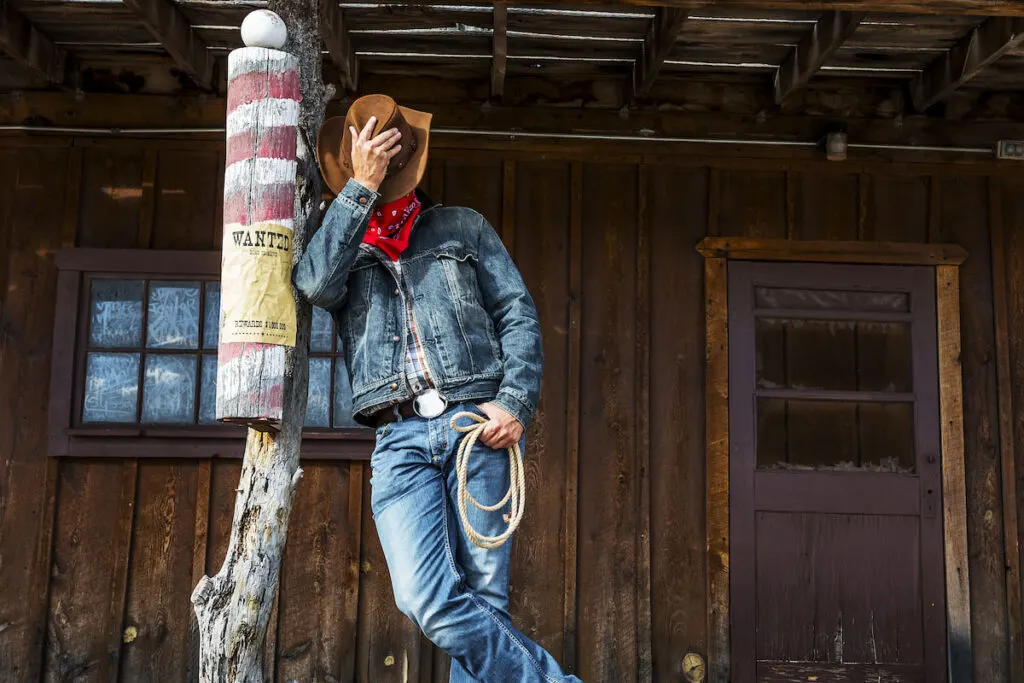
Do You Have to Have a Horse to Be a Cowboy?
You do not have to have a horse to be a cowboy or to work at most western facilities. Some may prefer you to bring your own horse, but most have horses available to ride when needed.
Horses are expensive and if you do not have one, it does not mean that you are not a cowboy.
Final Thoughts
Reading about how to be a cowboy is easy but taking the necessary steps to become a real cowboy is a rough road. If you are serious about becoming a real cowboy, then know that it will not be effortless, but it will be worth the work. Your life will change drastically but you will learn more about appreciating life and the outdoors more than you ever dreamed possible.
Resources
I used my knowledge and experience in farm and ranch life along with the following source to write this article.

